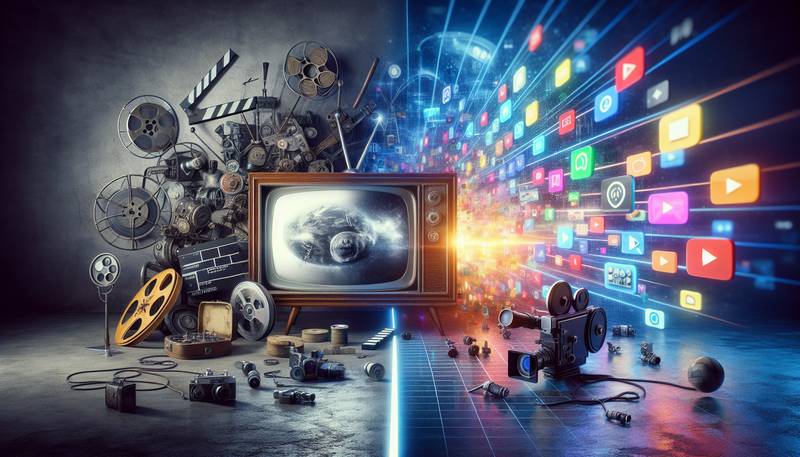The Changing Landscape of TV and Film in the Digital Age

The world of television and film has undergone a dramatic transformation in the digital age. With the advent of streaming services, the way we consume media has changed forever. Gone are the days of waiting for a specific time to watch your favorite show on TV, or having to go to a movie theater to watch the latest blockbuster. The digital age has given us the power to watch what we want, when we want, and from the comfort of our own homes.
The Rise of Streaming Services
Streaming services have revolutionized the way we watch TV and film. Services like Netflix, Amazon Prime, and Hulu have become household names, offering a vast library of content that can be accessed at any time. This has led to a shift in the way content is produced and consumed. Traditional TV networks are no longer the gatekeepers of what we watch, and filmmakers are no longer limited to the big screen.
Streaming services have also changed the way content is created. With the ability to reach a global audience, creators can now tell more diverse and niche stories that may not have been possible on traditional platforms. This has led to an explosion of content, with more TV shows and films being produced than ever before.
The Impact on Traditional TV Networks
Traditional TV networks have been forced to adapt to the changing landscape. Many have launched their own streaming services, such as NBC's Peacock and CBS All Access, in an attempt to compete with the likes of Netflix and Amazon Prime. Others have turned to creating content specifically for streaming services, such as HBO's partnership with Hulu to create original shows like "The Handmaid's Tale".
The rise of streaming services has also led to a decline in traditional TV viewership. With more people cutting the cord and opting for streaming services, TV networks have had to find new ways to reach their audience, such as through social media and online platforms.
The Future of Film
The film industry has also been affected by the digital age. With the rise of streaming services, more and more films are being released directly to these platforms, bypassing the traditional theatrical release. This has led to a debate within the industry about the future of film distribution. Some argue that streaming services are killing the movie theater experience, while others believe that they are simply providing another way for people to watch films.
The digital age has also led to changes in the way films are financed and produced. With the ability to reach a global audience, filmmakers can now crowdfund their projects or release them independently on platforms like Vimeo or YouTube. This has opened up new opportunities for independent filmmakers to get their work seen by a wider audience.
The Impact on Viewers
The changing landscape of TV and film has had a profound impact on viewers. With so much content available at our fingertips, we now have more choice than ever before. We can binge-watch entire seasons of a show in one sitting, or watch a film that we may not have had the chance to see in theaters.
This abundance of choice has also led to what some call "content overload". With so many options, it can be overwhelming to decide what to watch. This has led to the rise of recommendation algorithms, which suggest content based on our viewing habits and preferences.
The Role of Social Media
Social media has also played a significant role in the changing landscape of TV and film. Platforms like Twitter and Instagram have become a way for viewers to engage with their favorite shows and films, as well as for creators to promote their work. Social media has also given rise to fan communities, where viewers can connect with others who share their interests.
Overall, the digital age has changed the way we watch TV and film, and the industry has had to adapt to keep up. While some may see these changes as a threat to traditional media, others see it as an opportunity to reach a wider audience and tell more diverse stories. One thing is for sure, the landscape of TV and film will continue to evolve as technology advances.
Conclusion
The digital age has brought about a significant shift in the landscape of TV and film. With the rise of streaming services, traditional TV networks and the film industry have had to adapt to the changing world of media consumption. Viewers now have more choice than ever before, and with the role of social media, they are more engaged with their favorite shows and films. As technology continues to advance, we can expect to see even more changes in the way we consume TV and film in the years to come.


